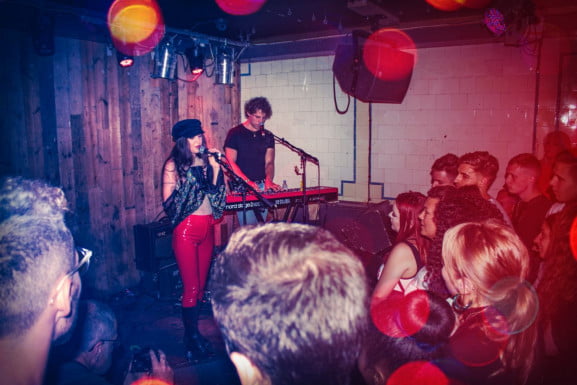The Fisherman’s Bastion of Budapest, Hungary
Budapest functions as both the administrative hub and biggest city of the country Hungary. Budapest serves as the largest settlement in Hungary by population statistics. Aquincum was the original name that Celtic settlers used to identify their merged village that became Budapest. Lower Pannonia formed into a Roman city where it exists today as the historical town. The settlement adopted Hungarian occupation after these people settled there during the 9th century. The first Mongolian invasion led to the combustion of the initial settlement during 1242. After its founding the town became a cultural capital which attached humanist Renaissance elements to its identity. The Ottoman Empire ruled this particular area during the period of its territorial control. approximately 150 years. The development of Budapest into a worldwide city took place when it merged with Pest and Obuda in 1873. After 1873 the city obtained its status as capital for the Austro-Hungarian empire. Following World War I the Austro-Hungarian empire lost its existence.
Budapest shows exceptional strength in various fields such as arts, business, design, education, entertainment, research and countless more domains. Each year more than 4.4 million people choose Budapest as their destination. Visitors heavily choose this destination as one of the world’s favorite cities. Europa’S most celebrated scenic wonder Halaszbastya exists as Budapest’S notable landmark.
The Fisherman’s Bastion in Budapest
Visiting the Fisherman’s Bastion stands as the premier attraction in Budapest. The Bastion accomplished its primary goal to deliver spectacular views since construction began specifically for viewing purposes. People constructed the current lookout towers during the 1800s to provide optimal panoramic views of Budapest from their vantage point. The Fisherman’s Bastion in Budapest provides enchanting perspectives across the Danube River while showing Buda Castle and Castle Hill to its visitors.
History of the Fisherman’s Bastion
Among all tourist attractions in Budapest the Fisherman’s Bastion remains among the most prominent destinations because it was constructed between 1895 and 1902. The building served as a part of multiple 1000th birthday celebrations for Hungary in the early 20th century.
The architect Frigyes Schulek designed the Bastion in Neo-Romanesque style since it resembled early medieval times. The restoration work on the Matthias Church by Frigyes Schulek led to his redesign of its interior as well as his construction of the Bastion which functioned together with the church renovation.
Seven towers stand as design principles of the Fisherman’s Bastion known as Halaszbastya. The seven chieftains who brought their peoples to present-day Hungary in 895 are represented through towers situated across the Bastion area. Within the core area of Halaszbastya stands a statue of St Stephen who ruled Hungary at a time similar to his reign as the first king of the land. As a millennium symbol the Bastion serves as a significant monument for the history of Hungary.
Layout of Fisherman’s Baston
The Bastion emerged when authorities decided Budapest Castle possessed military value while they also wished to create remembrance areas with magical settings for both those who lived there and those who visited. The walls and palace received diminished thickness because of this building method contrasted with midlevel castles. A set of stairs in front of the bastion makes visitors experience an awe-inspiring start to their exploration of Castle Hill attractions. The son of the architect restored the bastion after World War II damage. A complete site restoration project has been finished since that point leading to total site renovation.
Visitors can access all attractions on Castle Hill through the staircase that leads visitors to the bastion. People can find various statues positioned along an enchanting white stone staircase that gives viewers amazing European vistas. architekt designed a triumphant front gate that stands magnificent because of its architecture and statues.
During the Second World War the bastion suffered serious hits that resulted in severe destruction to its viewing platforms. The rehabilitation effort of the towers fell under the guidance of Janos Schulek who is the son of founding architect Frigyes Schulek. The ministry of finance together with surrounding buildings received permanent damage resulting in their relocation. After a period of modernization the property became a hotel establishment.
The Soviet occupants placed a red star upon the Bastion walls which faced Pest during their time of control. Every morning the city residents encountered the Soviet star which announced to them that Soviet authority became the ruling power of Hungary.
The bastion gains additional hotel neighbors yet it preserves its title of UNESCO world heritage destination by remaining a top European viewing spot.
[new_royalslider id=”20″]
What explains the origin of the Fisherman’s Bastion label?
Multiple theories explain the Fisherman’s Bastion name origins yet scientists cannot establish complete certainty regarding their accuracy. People believe that Fisherman’s Bastion acquired its name through the fishermen who resided in Watertown. This site stands beneath the Bastion in the city itself. The name Fisherman’s Bastion derives from various beliefs including straightforward geographical position as well as stories about their defensive role during wars. Many experts relate Fisherman’s Bastion to the fish market at St. Matthias church where Bastons received their name. The Fisherman’s name survives to this present day although no one is entirely certain about its persistence.
Join the Original Free Budapest Walking Tour to discover the Fisherman’s Bastion of Budapest in a fantastic way.
Table of Contents



